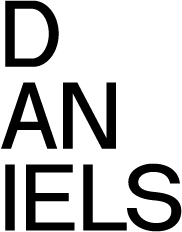Changing Tides: Designing Opportunities Along the Bay of Fundy
LAN3016YF (L0102)
Instructor: Matthew Brown
This studio will challenge students to move beyond the urban environment, and into its rural counterpart. As a region comprised of primarily rural communities, Atlantic Canada is an integral and unique component to the fabric of our country that poses unique challenges which require design thinking. This studio will provide the information and opportunity for students to reposition the agency of design as critical to both the development, and protection, of our rural coastal landscapes. The intention is to encourage students to engage in design research metrics that oscillate scales to inform positions on the future of the rural in a modernizing globe faced with the issues of climate change, loss of habitat and biodiversity, population growth, and economic volatility.
Along the predominantly uninhabited, beautiful coastline of the Bay of Fundy in New Brunswick, between Fundy National Park and the Fundy Trail Parkway, lies Martin Head - 800 acres of privately-owned land. The site is composed of diverse landscape typologies that include the Acadian Forest, Quiddy River tributary, tidal marsh, sand bar, beach, fossilized sand dune, and steep rock faces, all of which have been shaped and influenced by the largest tides in the world. This land will be the study site and foundation for the studio. While currently uninhabited, this site has become a destination amongst tourists and local outdoor enthusiasts for camping and exploration.
This studio will begin with in-depth research and mapping to uncover the many challenges (population growth, housing shortage, dated infrastructure, coastal erosion, and “have-not” province attitudes etc) facing the Maritime region, and New Brunswick specifically, as well as the potentials found in rural place-based economies. In developing a deeper comprehension of issues, students will then use mapping and cartography to uncover potential opportunities and program for design-based solutions. While the initial research phase of work will be collaborative, students will work independently on developing design interventions that are sensitive to the local environment and ecologies, while offering a new use of this unique site.
Course structure:
- Understanding– Research and cataloguing regional issues and potentials
- Uncovering– Research and mapping site issues and opportunities
- Drawing Parallels – Identifying case studies
- Provocations - Sketching initial design responses
- Landing – Studio trip (October 26-31)
- Proposals – Individual detailed landscape-based design interventions

